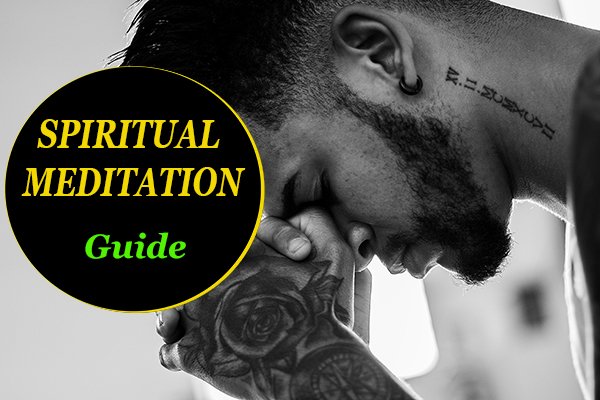Renew your life Today
In the chaotic symphony of daily life, finding solace through spiritual meditation becomes a transformative endeavor. This practice, deeply rooted in the essence of tranquility, invites individuals to embrace a serene journey of self-discovery. In this guide, we will explore the nuances of spiritual meditation—a technique that goes beyond the ordinary, offering a path to profound introspection and peace.
1. Choosing a Comfortable Position: Crafting Your Sacred Space
Before delving into the practice of spiritual meditation, the initial step is to select a position and place that resonates with comfort and tranquility. Amidst the cacophony of city life, it’s crucial to distance oneself from the noise, seeking refuge in the embrace of nature’s greenery and the gentle melody of birdsong. The chosen meditation position should strike a balance—comfortable yet not overly relaxing, ensuring that the practitioner remains awake and alert. Whether adopting the Vajrasana, Padmasana, Sukhasana, sitting on a chair with a straight back, or standing with back leaning on a wall, the choice is personal. With eyes gently closed, the journey into spiritual meditation begins.

2. Experiencing the Process: Unleashing the Flow
Contrary to our usual approach to tasks, spiritual meditation demands a departure from conscious planning and execution. Unlike the controlled manner in which we navigate daily responsibilities, this practice encourages a surrendering to the natural and organic flow of the process. Becoming a passive spectator, one allows the meditation to unfold spontaneously, free from the constraints of rigid expectations. The emphasis is on letting go, allowing the practice to take its course without fixating on correctness or worrying about the outcome. It’s a journey of experiencing the moment without the burden of conscious control.
3. Acknowledging the Thoughts: A Mindful Dance
Living in an information-driven world, our minds are incessantly bombarded with a ceaseless stream of data—from live updates and breaking news to the constant chatter of social media. Even in moments of meditation, thoughts persistently emerge, vying for attention. The challenge lies not in suppressing these thoughts but in acknowledging them without succumbing to their influence. Spiritual meditation encourages the practitioner to let thoughts pass like fleeting clouds, avoiding the entanglement of reactions. By observing thoughts without attachment, the meditator regains focus, returning to the essence of the practice—being present in the moment.
4. Uttering a Prayer: Infusing Spirituality into Meditation
Amidst the stillness of meditation, the act of uttering a prayer becomes a profound ritual. This prayer need not be confined to religious affiliations; it can encompass any sentiment or phrase that holds personal significance. It may resonate with nature, happiness, or even take the form of a mantra. The key is to maintain a loose and relaxed posture, breathing naturally, and observing the breath’s gentle rhythm. With each exhalation, the chosen prayer becomes a guide, a means to draw attention back to the breath. In this union of breath and prayer, spiritual meditation deepens, fostering a harmonious connection between the inner and outer realms
5. Reflecting on Oneself: A Journey Inward
As the meditation unfolds, the focus shifts to self-reflection—an exploration of one’s body, thoughts, and presence in the surrounding space. Heightened awareness emerges, enveloping the practitioner in a conscious embrace of the present moment. The body’s sensations, the rhythm of breath, and the quietude of thoughts become subjects of introspection. The transition from meditation involves a gradual return to external awareness, opening the eyes slowly, and maintaining the meditative posture. The effects of the practice linger, bestowing a sense of lightness upon the body. Reflecting on the process, the practitioner acknowledges the naturalness of reactions and embraces the calmness that follows the spiritual meditation.

Conclusion: Emerging from the Spiritual Cocoon
As the spiritual meditation session draws to a close, it’s time to gently step out of the meditative cocoon. Stretching the body, resuming a connection with the external environment, and assimilating the experience become essential steps. The effects of spiritual meditation extend beyond the temporal boundaries of the practice, influencing the practitioner’s demeanor and reactions in daily life. This journey inward, guided by the spiritual meditation technique, unveils layers of tranquility and introspection. With a renewed sense of calm and understanding, the individual emerges from the spiritual cocoon, ready to embrace the ongoing tapestry of existence.
In the realm of spiritual meditation, the ordinary transforms into the extraordinary—a journey of self-discovery, mindfulness, and the harmonious dance between the physical and the metaphysical. As the seeker ventures deeper into the realms of the soul, the practice becomes a testament to the profound connection between the individual and the universe. In the simplicity of breath, the utterance of prayer, and the acknowledgment of thoughts, spiritual meditation becomes a sacred pilgrimage—an exploration of the self, guided by the gentle whispers of the soul.


